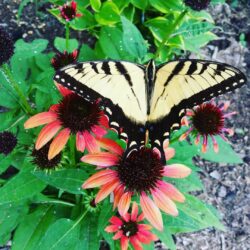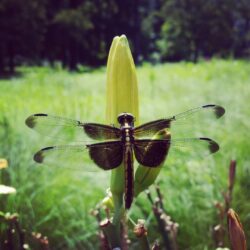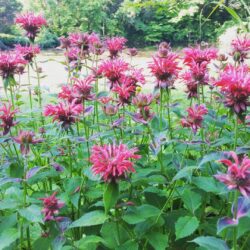By Bernheim
 Spring planting season is rapidly approaching, so as you consider the seeds and starters to purchase, think about planting native perennials!
Spring planting season is rapidly approaching, so as you consider the seeds and starters to purchase, think about planting native perennials!
An expanding U.S. greenhouse and nursery market is providing greater access to exotic and hardy plants never before offered to home gardeners and hobbyists. However, having nonnative plants in your garden can require a large amount of work. Soil may have to be amended. Water may have to be supplemented. Plants may require fertilization or greenhouse storage in the winter. Depending on the characteristics of the plant, aggressive measures may have to be taken to prevent the spreading of invasive plant species.
Planting a native perennial garden is a solution to many of these issues that also provides year-round viewing interest, habitat for wildlife, and food for pollinators.
Benefits of native perennials:
- Easier to grow
Native plants are generally already adapted to the soil, water, and climate conditions that they will be experiencing and do not need special provisions
Annuals only live for one growing season, perennials will emerge every season
- Less water/fertilizer
Native perennials are less likely to have special requirements for optimal growth
- Food for Pollinators, Wildlife
Native plants evolved to suit the needs of the local wildlife and provide them with a year-round food source
- Planting for blooms in all seasons
- Planting for berries in winter
- Mixing grasses, shrubs, and flowers for varying heights
- Incorporating different textures to create visual interest
- Incorporate fountain, statue, or specimen tree for focal point
- Consider foliage color in addition to bloom color



